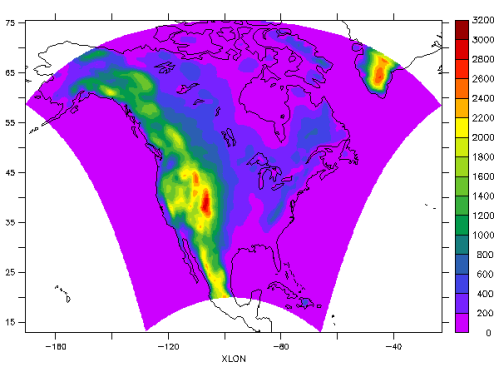
| North American Regional Climate Change Assessment Program |
| Welcome to NARCCAP! |

NARCCAP is an international program that serves the high resolution
climate scenario needs of the United States, Canada, and northern
Mexico, using regional climate model, coupled global climate model,
and time-slice experiments. NARCCAP users include those interested in regional analysis, impacts studies, and further downscaling. User resources. NARCCAP data is stored in CF-compliant NetCDF format and distributed through the Earth System Grid. Data access and documentation. NARCCAP is now Open-Access — Registration is no longer required for access to the NARCCAP dataset. Anyone can download NARCCAP data from the Earth System Grid data portal. (You will still need an ESG account.) Timeslice Climate Change Plots — Plots for the GFDL-timeslice have been updated, and plots for the CCSM-timeslice have been added. Both experiments now have three RCMs for comparison: Timeslice Results. New Data as of October 2012 — Recently-published data includes 3-D variables from both HRM3-grdl runs; a number of missing 2-D variables from the MM5I-ccsm runs, as well as 3-D data from the MM5I-ccsm current run; and multiple variables (2-D and 3-D) from both runs of the CAM3 timeslice experiment. Coming Soon
More Guidance Materials |





